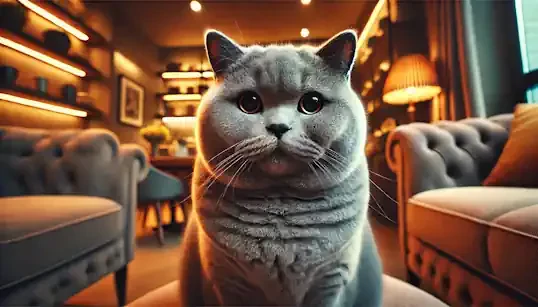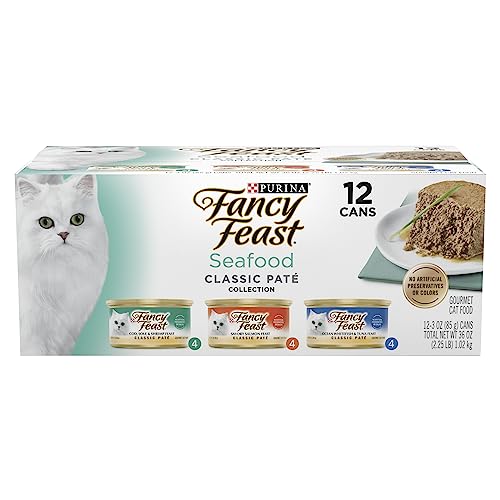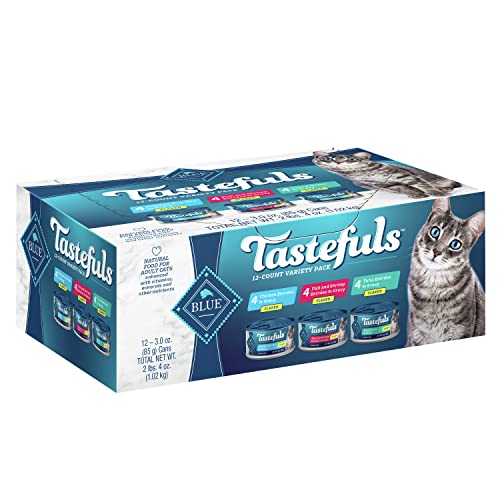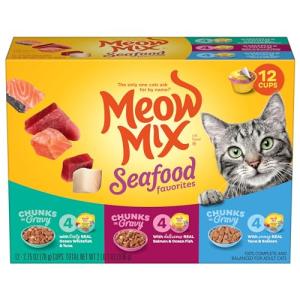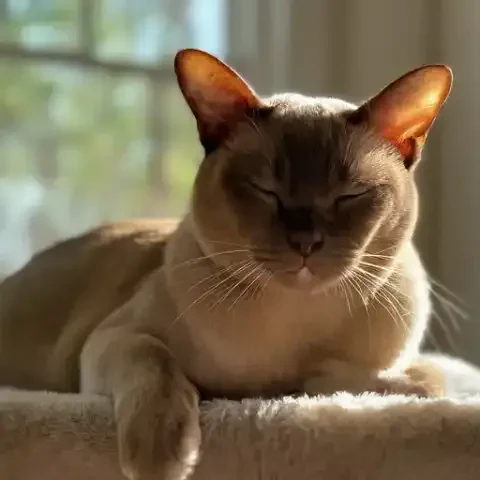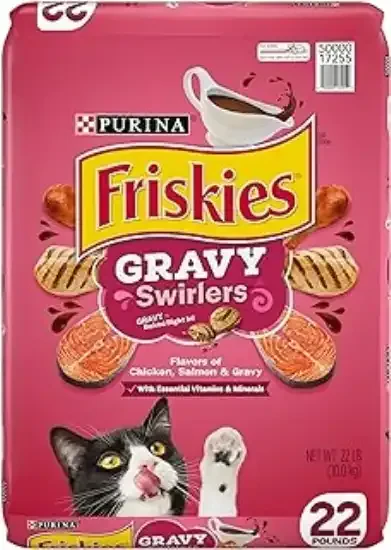Picture a plush, round-faced feline, a living embodiment of comfort and charm. Imagine running your fingers through a coat so dense and luxurious it feels like the softest velvet, gazing into eyes that gleam with the warm intensity of molten copper, and sensing a presence that exudes calm contentment and gentle affection. This is the British Shorthair cat, the iconic "teddy bear" cat, a breed that encapsulates charm and companionship with an understated British elegance. If you are drawn to a feline friend who is both breathtakingly beautiful and wonderfully well-behaved, a cat who offers unwavering loyalty and quiet devotion, and who brings a touch of classic British sensibility to your home, then the British Shorthair may be the purrfect companion you’ve been searching for. More than just their instantly recognizable appearance, British Shorthairs are celebrated for their easygoing nature, their affectionate hearts, and their ability to bring a sense of calm and gentle joy into the lives of their fortunate families. This ultimate guide is your deep dive into the captivating world of the British Shorthair, designed to unveil every facet of their appeal, from their hardy heritage to their endearing personalities, the nuances of their care, and the reasons why they have captured the hearts of cat lovers across the globe. Prepare to be utterly charmed by the plush perfection and enduring appeal of the British Shorthair, a breed that truly embodies feline companionship at its finest.
The heritage of the British Shorthair cat is deeply rooted in the British Isles, stretching back centuries and intertwined with the everyday lives of the people of Britain. Their story is not one of recent creation, but of a slow and natural development, shaped by the environment and the needs of their human companions. These are not cats born of deliberate, modern breeding programs in their distant past; instead, their origins lie in the working cats of Britain, the felines who patrolled farms, streets, and homes, diligently controlling rodent populations and earning their keep through practical service. Descended from domestic cats who likely arrived with the Romans and possibly even earlier, these early British cats were hardy and adaptable, evolving over generations to thrive in the diverse landscapes and climates of Britain. They were essential members of agricultural communities and urban centers, keeping barns, granaries, and homes free from vermin, protecting food stores, and contributing to the overall health and well-being of human settlements. These working cat ancestors of the British Shorthair were not valued for their appearance or pedigree, but for their skill as hunters, their robust constitution, and their ability to thrive in a variety of conditions. Their development was a testament to natural selection, where traits like sturdiness, resilience, and a practical, easy-care coat were favoured, shaping the foundation of what would eventually become the beloved British Shorthair breed we know today. Their history is a reminder of the often-overlooked but vital role cats have played in human society for centuries, as working partners and essential contributors to daily life.
The emergence of the Victorian cat fancy in late 19th century England marked a turning point in the story of the British Shorthair, elevating these previously utilitarian felines into the realm of pedigree breeds and formal recognition. Victorian England was a time of great social change and a burgeoning interest in animal breeding and showing. Cat shows became increasingly popular, providing a platform for showcasing diverse feline types and celebrating their unique qualities. Harrison Weir, considered the "father of the cat fancy," played a pivotal role in this movement. He organized and judged the first large-scale cat show at the Crystal Palace in London in 1871, an event that is considered a watershed moment in the history of pedigree cats. Among the cats exhibited at this groundbreaking show were examples of the sturdy, round-faced, shorthaired felines that would later become known as British Shorthairs. These early British Shorthairs, while perhaps less refined than modern examples, captured the attention of cat fanciers who appreciated their robust build, their dense coats, and their inherently charming appearance. Early breeders, inspired by the recognition at these shows, began to selectively breed these native British cats, with the aim of refining and standardizing their desirable traits. They focused on enhancing their roundness of head and body, emphasizing the density and plushness of their coats, and solidifying the overall "cobby" type that became a hallmark of the breed. This marked the conscious effort to shape the British Shorthair into a distinct and recognizable breed, moving beyond their working origins and into the world of pedigree cats, while still retaining the natural charm and hardiness that had defined them for centuries.
Despite gaining recognition and popularity within the cat fancy, the British Shorthair breed faced a devastating period of near extinction during the two World Wars of the 20th century. World War I and World War II had a profound impact on all aspects of life, and pedigree animal breeding was no exception. Food shortages, economic hardship, and the overall disruption of wartime significantly hampered breeding programs and led to a drastic decline in the populations of many breeds, including the British Shorthair. Resources were scarce, and the focus understandably shifted to more pressing concerns than maintaining pedigree cat lines. By the end of World War II, the British Shorthair population was critically low, teetering on the edge of extinction. The breed's future looked bleak, and the charming "teddy bear" cat seemed poised to disappear from the feline landscape. However, much like their resilient ancestors, the British Shorthair was not destined to vanish. A dedicated group of breeders, recognizing the immense value of the breed and unwilling to let it fade away, stepped in to undertake the arduous task of rebuilding the British Shorthair population. In the challenging post-war era, these breeders embarked on careful and strategic breeding programs, aiming to revitalize the breed and bring it back from the brink. To expand the severely limited gene pool and reintroduce desirable traits, outcrossing to other breeds became a necessary, though sometimes debated, strategy. Persians, with their plush coats and rounded features, were used to enhance the coat density and roundness of the British Shorthair. Russian Blues, with their elegant blue-grey coats and refined bone structure, were also incorporated into some lines, contributing to coat color and overall type. These outcrossings were not undertaken lightly; they were carefully planned and meticulously executed, with breeders working diligently in subsequent generations to selectively breed back towards the distinct British Shorthair type, gradually re-establishing the breed's unique identity while bolstering their numbers and genetic health. The post-war revival of the British Shorthair stands as a testament to the dedication and perseverance of these breeders who, against considerable odds, saved this beloved breed from disappearing entirely.
Following their dramatic recovery, the British Shorthair not only survived but thrived, solidifying their place as one of the most consistently popular and globally recognized cat breeds. Breed standards, initially established in the early 20th century, continued to evolve and refine over time, with a consistent emphasis on the breed's hallmark characteristics: their roundedness, density, and the specific colours and patterns that define them. Major cat registries worldwide, including the Governing Council of the Cat Fancy (GCCF) in the UK, the Cat Fanciers' Association (CFA) and The International Cat Association (TICA) in North America, and numerous other registries across the globe, officially recognized the British Shorthair and developed their own detailed breed standards, ensuring a degree of consistency in the breed's definition across different regions. These breed standards served as blueprints for breeders, guiding their efforts to maintain the breed's distinctive type and temperament, and contributing to the overall uniformity and predictability of the British Shorthair. As the breed became more established and their unique charms more widely appreciated, their popularity spread across the globe. From their British Isles origins, British Shorthairs found homes and admirers in every corner of the world, becoming one of the most internationally recognized and sought-after breeds. Their consistent popularity is a testament to their enduring appeal, their gentle and adaptable nature, their iconic "teddy bear" appearance, and their ability to seamlessly integrate into a wide range of lifestyles and households. The British Shorthair's journey, from their humble working cat beginnings to their brush with extinction and their ultimate triumph as a globally beloved breed, is a remarkable story of resilience, dedication, and the enduring magic of a truly exceptional feline.
The British Shorthair cat is a masterpiece of plushness and roundness, a feline sculpted to embody cuddly charm and gentle solidity. Their physical presence is instantly recognizable, defined by their "cobby" body, their dense, luxurious coat, their round face, and their captivating eyes, all contributing to their iconic "teddy bear" appeal. The defining characteristic of the British Shorthair physique is their "cobby" body type. "Cobby" refers to a body shape that is short, stocky, rounded, and substantially built, conveying an impression of solidity and strength. British Shorthairs are medium to large in size, but it is their proportions and build that truly define their cobby shape. They possess a broad chest, short and strong legs, and a level back, all contributing to their compact and rounded silhouette. When you pick up a British Shorthair, you immediately notice their “substantial” feel. They are heavy-boned and well-muscled, giving them a robust and solid presence that is both comforting and impressive. This is not a delicate or fragile breed; they are built to be sturdy and resilient, reflecting their working cat ancestry and contributing to their overall impression of enduring health. Despite their substantial build, British Shorthairs are not clumsy or lumbering. They retain a surprising degree of agility and move with a graceful, if somewhat deliberate, gait, showcasing a balanced combination of strength and poise.
The coat of the British Shorthair is arguably their most celebrated feature, the very essence of their plush "teddy bear" persona. It is dense, luxurious, and incredibly soft to the touch, a tactile delight that perfectly complements their rounded physique. The breed standard calls for a double coat, meaning it consists of two distinct layers of fur: a dense, woolly undercoat that provides insulation and bulk, and a slightly longer outer layer of guard hairs that are resilient and contribute to the coat's texture. The unique characteristic of the British Shorthair coat is its "crisp" or "breaking" texture. This refers to the way the coat stands slightly away from the body, creating a plush, thick appearance, and how it "breaks" or parts when stroked against the grain, like stroking plush velvet or dense pile carpeting. This “breaking” texture is a hallmark of the breed and contributes significantly to their distinctive look and feel. The overall impression of the coat is one of thickness and density, providing excellent insulation and contributing to their rounded, cuddly silhouette. While their dense double coat is undeniably beautiful and luxurious, it is important to note that British Shorthairs do shed, particularly during seasonal shedding periods in the spring and fall. Regular grooming is essential to manage shedding and keep their coat healthy and free of mats.
The head and face of the British Shorthair perfectly mirror their cobby body, embodying the breed's signature roundness and adding to their endearing "teddy bear" expression. Their head is round and broad, with full cheeks that further enhance the rounded contours of their face. Well-developed jowls, particularly prominent in mature males, contribute even more to the roundness of their facial structure, giving them a full and cherubic appearance. Their expression is often described as sweet, open, and gentle, conveying a sense of calm contentment and approachability. A short, broad nose and a strong, well-defined chin complete their rounded facial structure, contributing to their balanced and appealing profile. Their ears are medium-sized, proportionate to their head, and set wide apart, further emphasizing the roundness of their head shape. The tips of their ears are slightly rounded, again echoing the overall rounded aesthetic of the breed. The eyes of the British Shorthair are large, round, and widely set, another key feature that contributes to their endearing and expressive gaze. Eye color is a crucial aspect of the breed standard, and while various colours are accepted depending on coat colour, the most traditional and desired eye color, particularly for the iconic "British Blue," is a deep, vivid copper to gold. These warm, intensely colored eyes provide a striking contrast to their cool blue-grey coat, enhancing their overall visual appeal and contributing to their gentle and captivating expression. For other coat color varieties, accepted eye colours can include gold, green-gold, or green, and in the colourpoint varieties, blue eyes are a defining characteristic. Regardless of the specific colour, breed standards emphasize the importance of eye color intensity and clarity, contributing to the overall sweet and expressive gaze that is so characteristic of the British Shorthair. Their legs are short to medium in length, sturdy and strong, perfectly proportionate to their cobby body, reinforcing their solid and grounded appearance. Their paws are rounded and firm, again complementing their overall rounded and substantial physique and providing a stable base for their sturdy build. Finally, their tail is medium in length, proportionate to their body, thick at the base, and tapering to a rounded or “blunt” tip, never sharply pointed. The tail is flexible and contributes to their balanced, cobby silhouette, acting as a visual counterpoint to their round body and head. In essence, the British Shorthair's physical traits are a harmonious symphony of roundness and plushness, from their cobby body to their teddy-bear face and dense, luxurious coat, creating a feline that is both visually iconic and irresistibly cuddly.
The temperament of the British Shorthair is as charming and comforting as their physical appearance, earning them a well-deserved reputation as gentle giants and ideal companions. They are known for their calm, docile, and remarkably well-behaved nature, making them exceptionally easy to live with and a joy to have in the home. British Shorthairs are renowned for their calm and docile demeanor, exuding an air of quiet dignity and peaceful contentment. They are easygoing and adaptable cats, readily fitting into various home environments and lifestyles, whether it's a bustling family home or a quiet apartment. Their temperament is often described as "dignified," meaning they tend to avoid demanding or overly excitable behaviours, preferring a calm and harmonious atmosphere. This gentle and composed nature makes them wonderfully suited to owners who appreciate a feline companion who is more serene than overtly energetic.
Affection is a cornerstone of the British Shorthair personality, though it is expressed in a characteristically gentle and understated way. They are loving and affectionate cats who form strong bonds with their families, but they are not typically clingy or overly demanding of constant attention. British Shorthairs enjoy gentle interaction, appreciating being petted and spending time near their owners, offering quiet companionship and a comforting presence in return. Their affection is more about gentle companionship than constant, dramatic displays. They are happy to be near you, to sit quietly by your side, or to curl up at your feet, offering a sense of calm and comforting presence without being constantly underfoot or vying for your undivided attention. This balanced approach to affection makes them ideal companions for those who appreciate a loving cat but also value their own space and independence. While they are devoted to their families, British Shorthairs also possess a distinct independent streak. They are capable of entertaining themselves and being content with their own company for periods, making them well-suited to households where owners are away at work or have busy schedules. This independence does not mean they are aloof or uncaring; rather, they are simply not overly dependent and can be content with solitude, provided they receive attention and interaction when their families are home. This balanced nature makes them adaptable to different lifestyles and ensures they are not prone to separation anxiety or overly demanding behaviours when left alone for reasonable periods.
Intelligence is another hallmark of the British Shorthair temperament, though it is often expressed in a quiet and observant manner. They are intelligent cats, quick learners, and remarkably observant of their surroundings. Often described as “thinking cats,” they tend to assess situations carefully and react thoughtfully, rather than impulsively or dramatically. While they are intelligent and capable of learning, they are not always overtly demonstrative in their training, preferring a more subtle and independent approach to learning and problem-solving. Playfulness is certainly present in the British Shorthair personality, but it is, again, characterized by moderation and gentleness. They enjoy toys and games and appreciate interactive play sessions with their owners, exhibiting a playful spirit that extends into adulthood. However, they are not hyperactive or constantly seeking intense physical activity. Their play style is more relaxed and gentle, enjoying toys that they can bat around or chase at a leisurely pace. Puzzle toys and interactive feeders are particularly well-suited to their intelligence and moderate energy levels, providing mental stimulation without requiring excessive physical exertion. Patient and tolerant by nature, British Shorthairs are renowned for their gentle dispositions, making them excellent family pets, particularly well-suited to households with children. They are generally good-natured with children of all ages, exhibiting patience and tolerance, especially when treated respectfully. Their sturdy build also makes them less fragile than some more delicate breeds, making them more resilient to the sometimes-unpredictable interactions with young children. Their tolerant nature extends to other pets as well. They typically get along well with other cats and even cat-friendly dogs, often coexisting peacefully in multi-pet households. While early socialization is still important to ensure positive inter-species relationships, their inherent adaptability and gentle temperament generally facilitate harmonious interactions with other animals. Finally, British Shorthairs are known for their quiet and gentle vocalizations, adding to their overall sense of calm and understated presence in the home. They are not generally overly talkative cats, tending to be quieter than some more vocal breeds. When they do vocalize, their meows are usually soft and gentle, more of a quiet chirp or murmur than a demanding yell. They communicate more through body language, gentle nudges, and their comforting presence, rather than relying heavily on vocalizations to express their needs or desires. In summary, the British Shorthair personality is a truly delightful blend of calm, docility, gentle affection, independence, moderate playfulness, intelligence, patience, and quiet grace, making them exceptionally well-suited as cherished companions for a wide range of individuals and families seeking a loving, adaptable, and wonderfully easy-to-live-with feline friend.
Caring for a British Shorthair cat is a relatively straightforward and rewarding partnership, though there are specific aspects that are crucial to understand to ensure their plush beauty and robust health are maintained. Grooming, while not excessively demanding, is nonetheless essential for British Shorthairs, primarily due to their dense, plush double coat. Regular brushing is not optional; it is a necessary part of their care routine to keep their coat healthy, manage shedding, and prevent potential matting. While they are shorthaired and less prone to matting than longhaired breeds, their dense undercoat can still become tangled if neglected, and regular brushing is vital to prevent this, especially in areas where the coat is thicker, such as around the legs and belly. It is recommended to brush your British Shorthair 2-3 times per week as a minimum, increasing to daily brushing during shedding season, which typically occurs in spring and fall. During these shedding periods, their dense undercoat will loosen and shed more profusely, and more frequent brushing is essential to remove dead hair and prevent it from becoming embedded in furniture and clothing. The right tools can make grooming much more effective. A slicker brush is excellent for working through their dense coat and removing loose hair. An undercoat rake is particularly useful for reaching into the double coat and removing shed undercoat. Deshedding tools, used judiciously, can also be helpful during heavy shedding periods, but should be used carefully to avoid irritating the skin. Regular brushing not only removes loose hair but also helps to stimulate healthy coat and skin by distributing natural oils and improving circulation. Bathing is generally infrequent and only necessary when your British Shorthair gets noticeably dirty or requires bathing for show preparation. Over-bathing can strip their coat of its natural oils and potentially dry out their skin. Routine nail trimming, every few weeks, and dental care, including regular tooth brushing and veterinary dental checkups, are also essential components of their overall hygiene routine, just as they are for all cats.
Diet and nutrition are paramount for the health and well-being of British Shorthairs, and portion control is absolutely crucial to prevent them from becoming overweight or obese, a significant health concern for this breed. Feed your British Shorthair a high-quality cat food that is appropriate for their age, activity level, and primarily indoor lifestyle. Look for cat foods that list meat as the primary ingredient and are formulated to be complete and balanced for cats. However, even with a high-quality diet, British Shorthairs are very predisposed to overeating and gaining weight. Their stocky build and naturally lower activity levels as they mature contribute to this tendency, and they can easily become overweight if portion sizes are not carefully managed. Portion control is not just recommended; it is essential. Measure their food carefully at each feeding, strictly following the portion guidelines provided on the cat food packaging, and be mindful of adjusting portion sizes as their age, activity level, and metabolism change. Avoid free-feeding, where food is available at all times, as this almost inevitably leads to overeating and weight gain in British Shorthairs. Understand the serious health risks associated with obesity in cats, including diabetes, joint problems, heart disease, and reduced lifespan, and proactively manage your British Shorthair’s diet to maintain a healthy weight throughout their life. Fresh, clean water should always be available, encouraging hydration and contributing to overall health.
While not overtly energetic, British Shorthairs still benefit from daily exercise and playtime to maintain their physical and mental well-being and prevent weight gain. Encourage moderate daily activity through structured play sessions, providing a variety of toys, and creating an environment that encourages movement and exploration. Interactive play sessions, where you actively engage with your cat using toys that mimic hunting behaviours, are particularly beneficial. Puzzle toys and interactive feeders can also provide mental stimulation and encourage them to work for their food, slowing down eating and adding an element of challenge to meal times. Providing climbing structures like cat trees and scratching posts also encourages vertical movement and allows them to stretch and exercise their muscles. While British Shorthairs are not demanding of constant intense exercise, gentle encouragement to move and play regularly throughout the day is important to prevent them from becoming sedentary and to maintain their overall health and well-being. Mental stimulation is equally important for these intelligent cats. Puzzle toys, interactive feeders, and even simple training sessions can help keep their minds sharp and prevent boredom. Social interaction with their families is also a form of mental enrichment they enjoy, providing companionship and affection.
British Shorthairs are generally considered a robust and healthy breed, but it is essential to be aware of potential breed predispositions to certain health conditions to ensure proactive care and early detection if any issues arise. Hypertrophic Cardiomyopathy (HCM), a heart condition, is a potential concern in many breeds, including British Shorthairs, and responsible breeders should screen their cats for HCM to minimize the risk. Polycystic Kidney Disease (PKD), an inherited kidney disease that causes cysts to form on the kidneys, is another condition to be aware of in the breed. DNA testing is available for PKD, and reputable breeders should screen their cats to prevent passing this condition on to their offspring. Hip dysplasia, a skeletal issue affecting the hip joint, is also a possible concern, though less common than in larger breeds or dog breeds, but still something to be aware of. Finally, reiterate the very significant predisposition of British Shorthairs to obesity. Proactive management of their diet and exercise is crucial to prevent weight-related health problems throughout their lives. When seeking a British Shorthair, especially a kitten, prioritize choosing a reputable breeder who conducts health testing for HCM and PKD as a minimum, and ideally hip scoring as well. Responsible breeders will be transparent about their health testing protocols and will be happy to discuss the health history of their lines. Regular preventative veterinary care is paramount for all British Shorthairs. Annual vet checkups, vaccinations, parasite prevention, and dental care are essential for maintaining their long-term health and well-being and detecting any potential health issues early on. Due to their trusting and gentle nature and to protect their plush coats and overall well-being, an indoor lifestyle is strongly recommended for British Shorthairs. Indoor living provides a safe and controlled environment, protecting them from traffic, predators, diseases transmitted by outdoor animals, and the risks of getting lost or injured outside. Enriching their indoor environment with plenty of toys, climbing structures, and opportunities for social interaction will ensure they thrive and live long, happy, and healthy lives as cherished members of your home.
